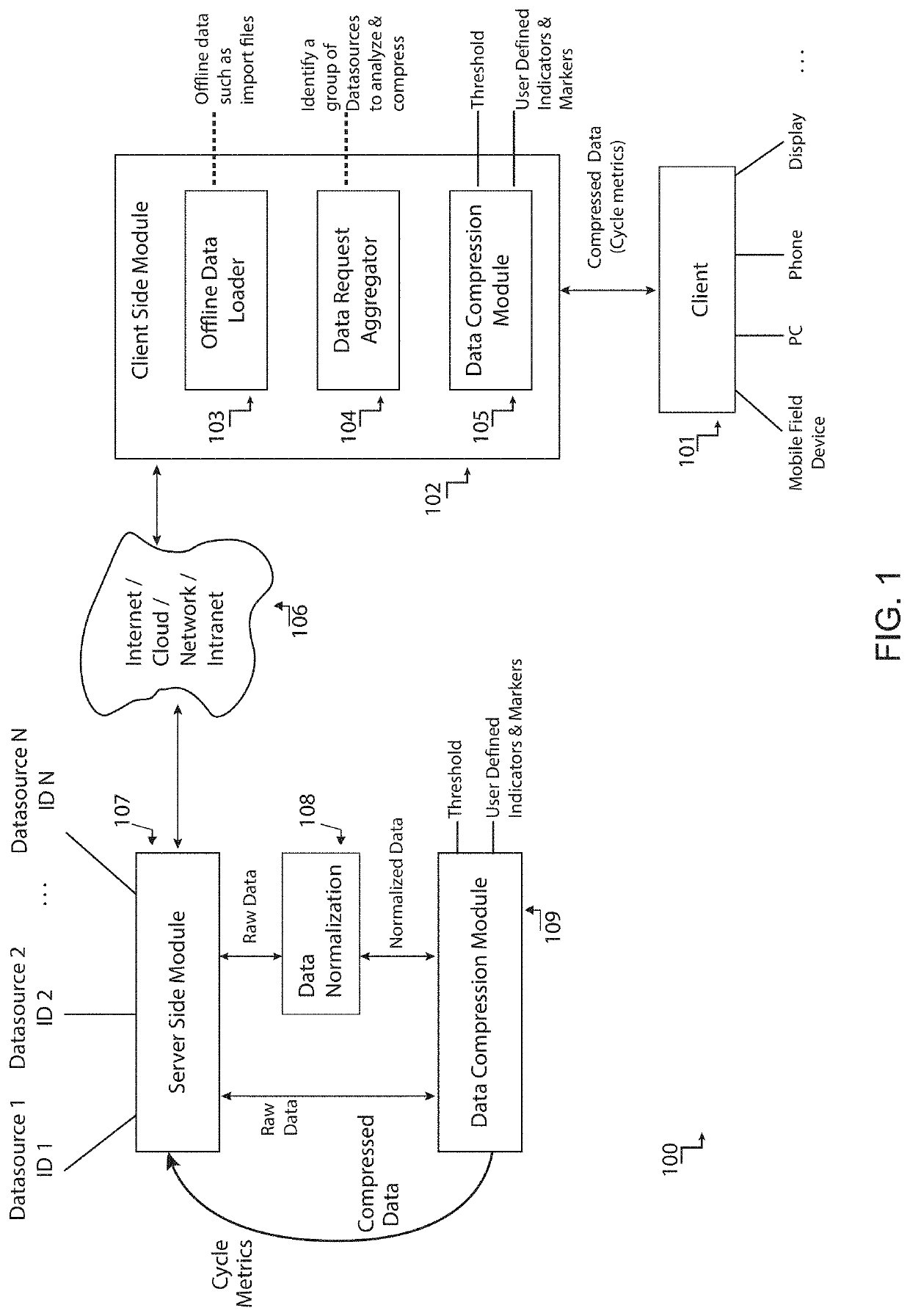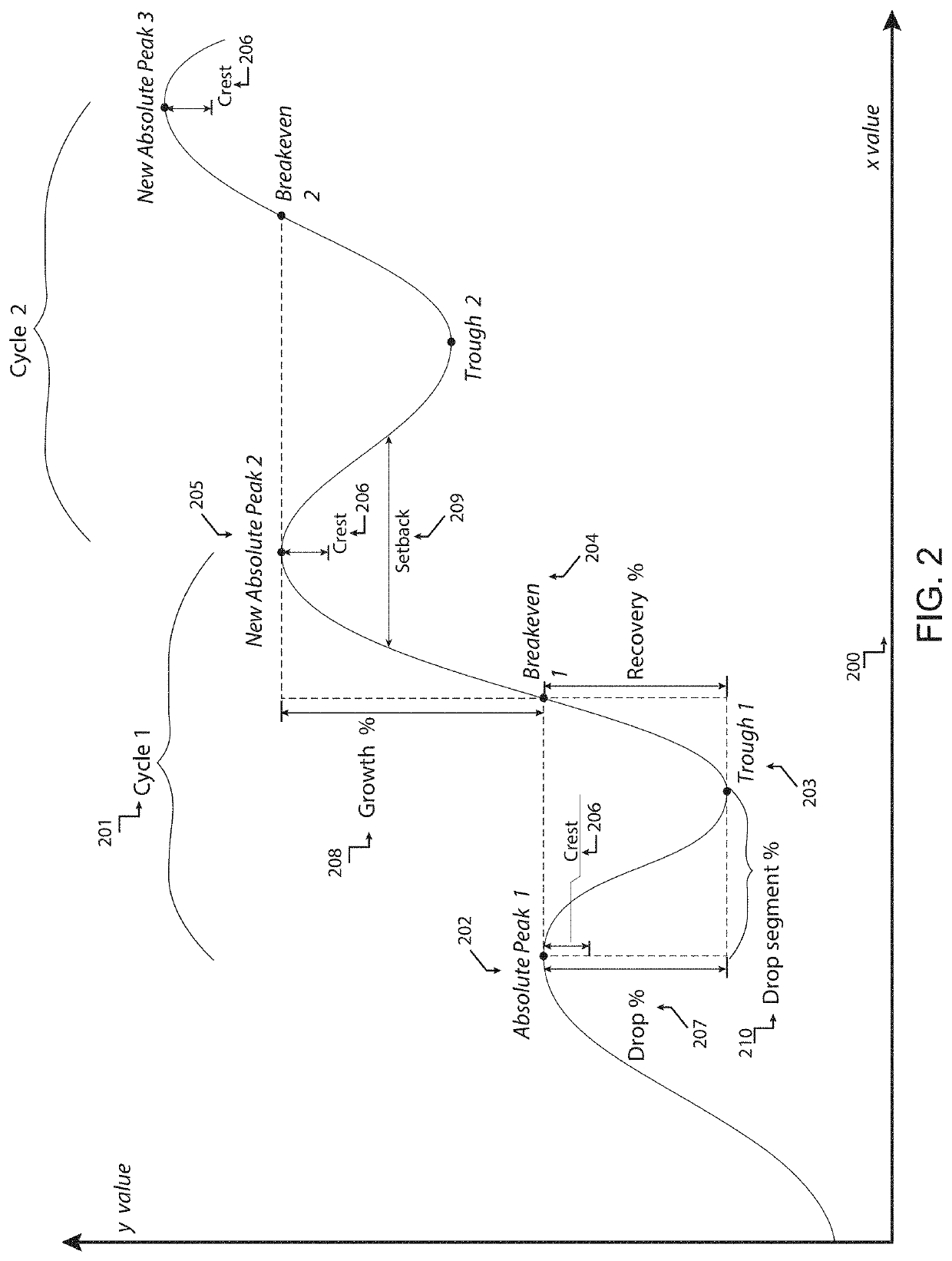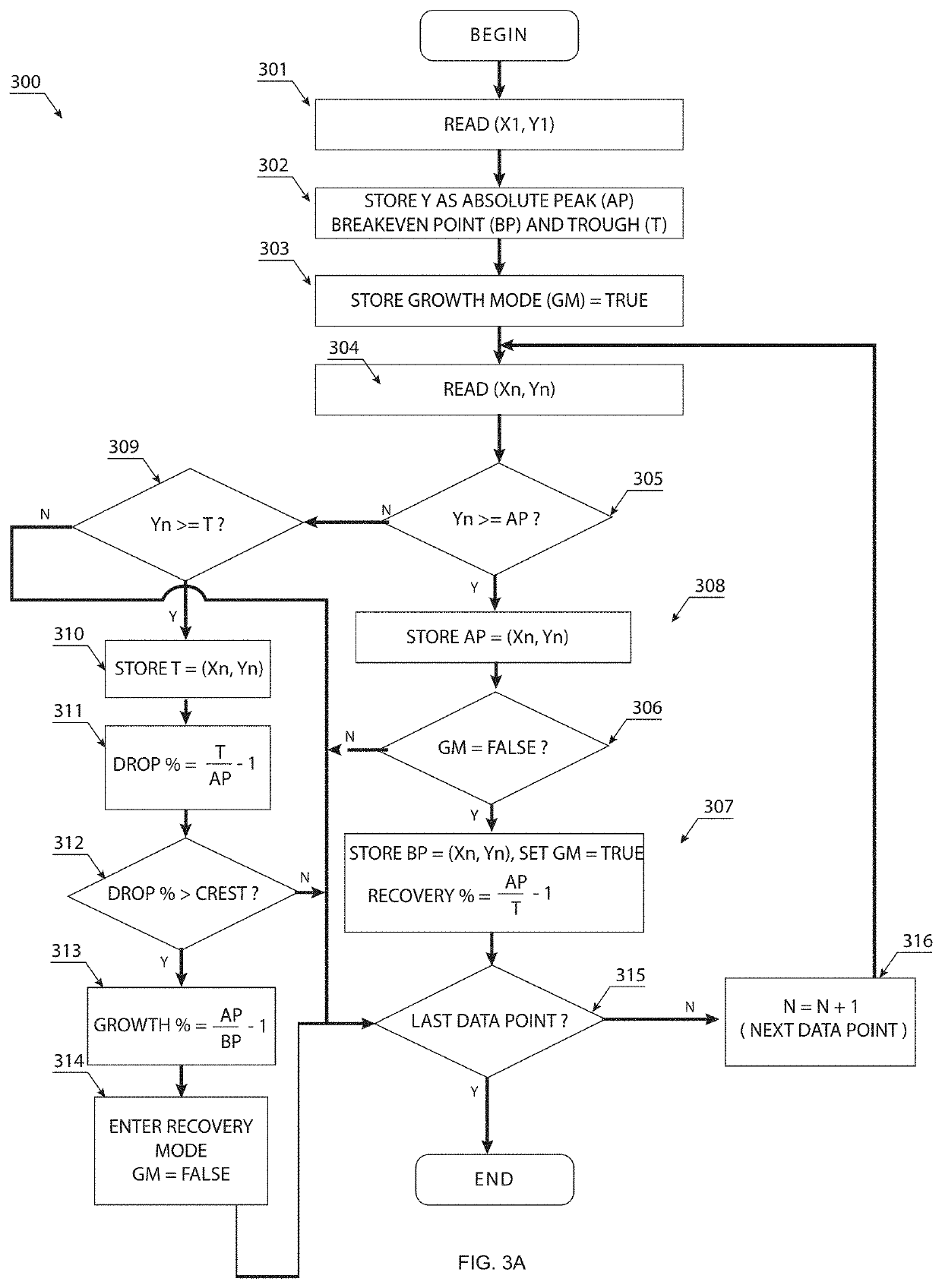Systems and methods for lossy data compression using key artifacts and dynamically generated cycles
a lossy data and key artifact technology, applied in the field of data processing, can solve the problems of high turbulence of data streams and repetition of similar data, and achieve the effects of reducing the size of data, high signal to noise ratio, and high turbulen
- Summary
- Abstract
- Description
- Claims
- Application Information
AI Technical Summary
Benefits of technology
Problems solved by technology
Method used
Image
Examples
example application
[0105]EKG Potential Data Stream
[0106]FIG. 9 shows an EKG Potential data stream where potential is on the Y axis and time is on the X axis. An absolute peak is indicated on the chart at point 901, followed by trough at 902, a breakeven point at 903, and a new absolute peak at 904. Using these key artifacts, the cycle metrics can be computed, including drop, recovery, and growth percentages.
[0107]The threshold is reset when the data stream crosses the threshold reset level at 905. At this point, the previous absolute peak is ignored and it is assumed the data stream may not recover to that level. Normally, the point at 906 would be classified as an intermediate peak; however, since the threshold was reset at the 905, the peak at 906 is reclassified to an absolute peak.
[0108]A heart attack can be associated with either an elevated drop percentage from the absolute peak 904 to the trough 908, or an elongated (larger than normal) drop segment percentage at 907. In comparing EKG data stre...
PUM
 Login to View More
Login to View More Abstract
Description
Claims
Application Information
 Login to View More
Login to View More - R&D
- Intellectual Property
- Life Sciences
- Materials
- Tech Scout
- Unparalleled Data Quality
- Higher Quality Content
- 60% Fewer Hallucinations
Browse by: Latest US Patents, China's latest patents, Technical Efficacy Thesaurus, Application Domain, Technology Topic, Popular Technical Reports.
© 2025 PatSnap. All rights reserved.Legal|Privacy policy|Modern Slavery Act Transparency Statement|Sitemap|About US| Contact US: help@patsnap.com



